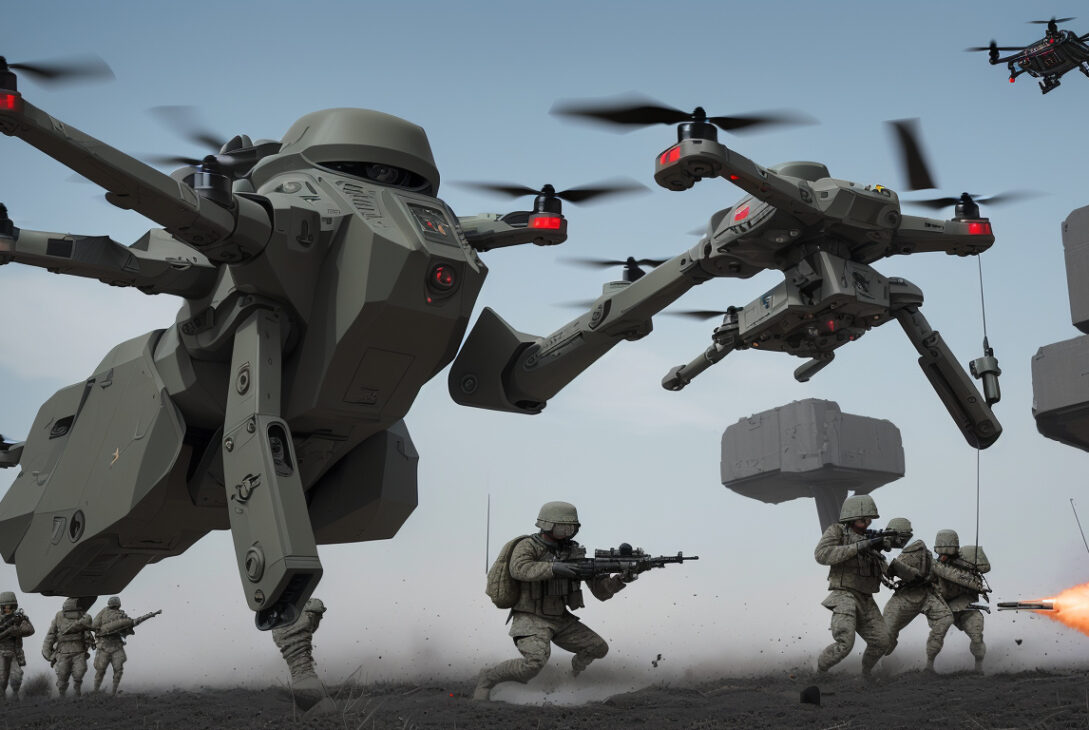Technology and Military Diffusion: Assessing the Impacts on Military Effectiveness
By Tewfik Hamel | August 22, 2025
What enables armies to prevail on the battlefield has long been a subject of intense scholarly debate. Various hypotheses have sought to explain the origins and evolution of military doctrine, focusing on material resources, organizational structures, and sociological influences. Despite extensive research, the question remains: how can one account for both the divergences and convergences in military doctrinal development observed across different armed forces and historical contexts?
The Puzzle of Military Resilience and Collapse
History provides striking examples of contrasting battlefield outcomes that defy simple explanations based on available resources or initial conditions. Some armies, when faced with overwhelming challenges, show extraordinary resilience, launching counteroffensives and maintaining cohesion. Others collapse rapidly despite seeming advantages.
Consider the North Vietnamese army during the Vietnam War: despite suffering vastly higher casualties than the technologically superior United States forces, they managed to withstand and eventually outlast their adversaries. Conversely, the French army in 1940, defending its homeland as it had done in 1914, crumbled in just six weeks. Though it suffered fewer than 100,000 combat deaths, it lost over two million prisoners, a stark contrast to its 1914 counterpart, which absorbed staggering losses but recovered to fight for years (Castillo, 2014).
Imperatives of Cost Reduction and Organizational Agility in Warfare
Two timeless imperatives in wartime are cost efficiency and organizational adaptability, both of which drive continuous innovation. Armies resistant or slow to innovate risk defeat even when materially superior. This has been evident in more recent conflicts, such as the United States’ engagements in Vietnam, Iraq, and Afghanistan; Russia’s military operations in Ukraine; Israel’s experiences in Lebanon; and France’s interventions in Mali.
A consistent lesson emerges: the inability to innovate results in operational inefficiency and critical structural capability gaps. However, military institutions, like all bureaucracies, often exhibit inertia and resistance to change.
Drivers of Innovation and Diffusion in Military Doctrine
Academic literature on military innovation and diffusion highlights three main influences:
- Material Constraints: Availability of resources determines what innovations are feasible.
- Organizational Cultures: Military institutions’ internal values and structures shape change adoption.
- Sociological Dynamics: Broader societal and political pressures affect doctrinal outcomes.
Neorealist perspectives propose that systemic security pressures compel states to adopt innovations to ensure survival. Success, accordingly, depends on the ability to marshal organizational and financial capital required for adoption, collectively influencing the international balance of power.
Typically, defense innovation follows formal procedures: reassessing national security priorities, revising policies, and restructuring military organizations. Yet, wartime crises can accelerate this process considerably. Russia’s 2022 invasion of Ukraine, for example, dramatically hastened doctrinal and organizational changes. Armed forces remain highly responsive not only to shifting geostrategic landscapes and evolving warfare characteristics but also to domestic political and societal conditions.
Navigating Civil-Military Tensions and Societal Norms
A persistent challenge especially evident in democracies is the tension between military necessity and societal values. In many modern societies, cultural shifts have eroded the traditional "warrior ethos," often devaluing martial values. In contemporary operational settings, where winning local population support is crucial, the use of force may be limited or counterproductive.
As General Walter D. Kerwin remarked in the 1970s, to effectively defend society, the military must focus on the "hard values of the battlefield," which may conflict with liberal societal values. This tension imposes structural constraints on military freedom of action—civilian oversight and broader social norms inherently limit the rationality and feasibility of doctrinal changes (Hamel, 2023).
Major Military Change: Innovation, Adaptation, and Emulation
Military transformation is shaped by a confluence of technology, organizational restructuring, new doctrines, and evolving conflict perceptions. Farrell and Terriff (2002) describe Major Military Change (MMC) as occurring through three intertwined processes:
- Innovation: The creation of new technologies, strategies, and force structures.
- Adaptation: Adjustments of existing capabilities and operational methods.
- Emulation: Adoption of innovations through imitation of other military organizations.
The scale of change—major or minor—depends on both the process and its long-term strategic impact.
Before institutional reforms, military strategists must develop a "new theory of victory," as Stephen Rosen (1991) called it. This theorizing anticipates future conflict scenarios and guides doctrinal and financial reforms. Military staffs engaged in strategic thought and planning are central to this intellectual work, but their efforts are often constrained by political considerations and bureaucratic limitations (Hamel, 2023).
Globalization and the Asymmetric Diffusion of Military Technologies
Innovation is a crucial catalyst for the evolution of warfare. Hegemonic stability theory suggests that military and economic innovations initially pioneered by leading states tend to diffuse gradually to other states in the international system (Gilpin, 1981). Globalization and technological progress have accelerated this diffusion process in several key ways:
- Dual-use technologies (e.g., computing, software) have lower capital-entry barriers.
- Commercial markets often innovate faster than defense sectors, making cutting-edge technologies widely accessible.
- High global economic integration allows states to leverage foreign direct investment and external expertise.
As a result, advanced military technologies spread rapidly and broadly, eventually becoming available to potential adversaries.
However, states differ significantly in their responses to innovations—some adopt, others develop countermeasures, form alliances, or remain neutral. These decisions shape how power diffuses strategically within the international system (Goldman & Eliason, 2003).
Conclusion
Understanding technology and military diffusion is vital to comprehending contemporary military effectiveness. The complex interplay of technological innovation, organizational adaptation, political constraints, and societal values shapes how armed forces evolve and perform in conflict.
The ongoing tension between the imperatives of military effectiveness and civil-military relations underscores the nuanced challenges of doctrinal change. As warfare continues to evolve amid globalized technological landscapes, assessing these dynamics remains critical for policymakers, military planners, and scholars alike.
References available upon request.










